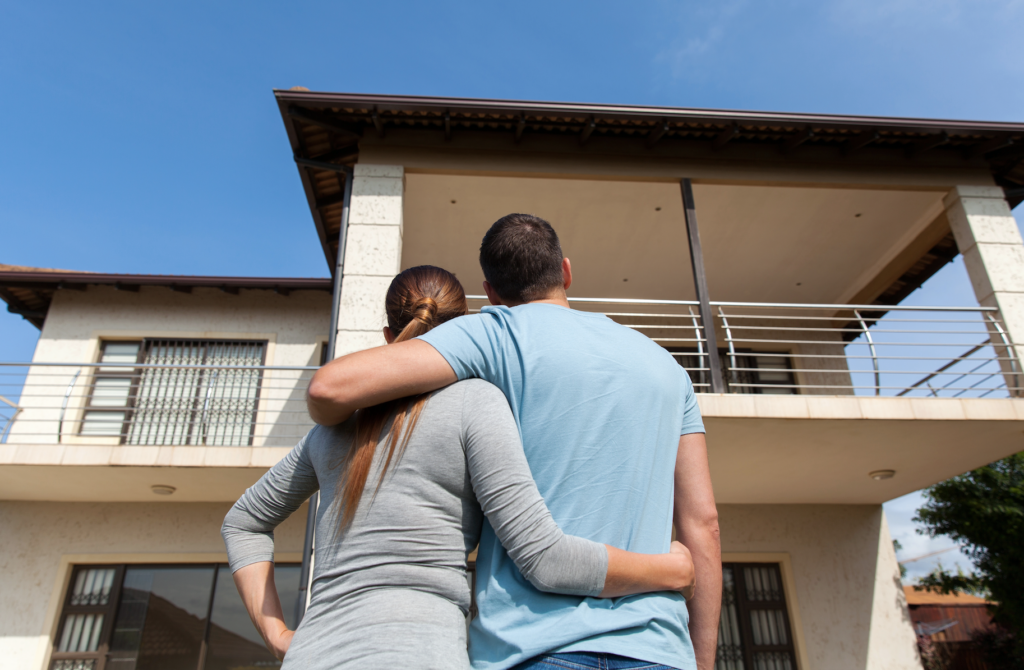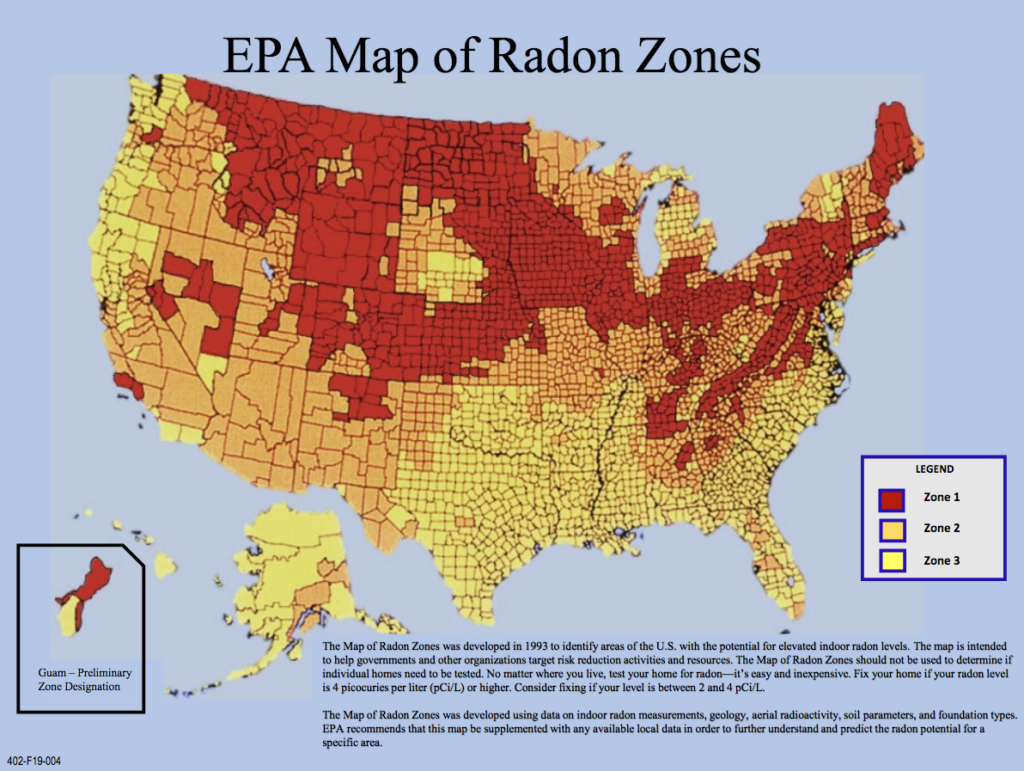
Radon can be a hot topic these days especially if you have family members living on the lowest level of your home. Many are concerned about their family’s safety. Let’s talk about it and whether we are safe living in or buying a home with radon.
Let’s understand radons place in our environment, the risks, its prevalence, normal radon levels, testing, living in a home with radon, and how to get rid of radon in your basement.
What is radon?
Radon is a naturally-occurring radioactive gas resulting from the breakdown of radium. The gas is inert, colorless and odorless. Radon occurs naturally in the atmosphere in trace amounts, disperses rapidly outdoors, and, generally, is not a health issue.
Most radon exposure occurs inside homes, schools and workplaces. Radon gas becomes trapped indoors after it enters through cracks and other holes in the foundation.
What are the actual risks of radon?
Radon is the number one cause of lung cancer among non-smokers, according to EPA estimates. Overall, radon is the second leading cause of lung cancer. It is responsible for about 21,000 lung cancer deaths every year. About 2,900 of these deaths occur among people who have never smoked.
For smokers the risk of lung cancer is significant. About 62 people in a 1,000 will die of lung-cancer, compared to 7.3 in a 1,000 for those who have never smoked.
Where is radon most prevalent?
Regardless of where you live you should test for radon, it’s easy and inexpensive. You can refer to the EPA’s map of Radon Zones for more information.

How do I know if I have normal radon levels in my home?
Test your home. Generally speaking, if your radon level is 4 picocuries per liter (pCi/L) or higher, you should take steps to mitigate radon. It’s a good idea to consider mitigation if your level is between 2 and 4 pCi/L. Below 2 pCi/L is considered a normal radon level.
What is radon testing?
There are two basic types of radon tests:
- Short term tests measure radon levels for 2-7 days. This is a quick way to screen a home. When you test for radon you should start with a short-term test.
- Long term tests measure radon levels for a minimum of 90 days. They are the best way to estimate the annual average of radon in your home. Long-term testing should include both heating and non-heating seasons.
- All Minnesota homes should be retested every 2-5 years and it’s a good idea to save your results.
- Test after you make changes to the foundation, heating, cooling or ventilation. Consider testing before a major remodeling project to determine if radon mitigation should be added into the project.
- Retest after adding a radon mitigation system to make sure it is working properly.
Standard Water will give you a free radon test kit. Simply contact us and ask for one. You can purchase a home radon test kit at many hardware stores and online. They cost about $15. Electronic radon detectors run from about $100 to $200.
Is it safe to live in or buy a home with Radon?
With proper radon mitigation, homes with elevated levels can be made safe. If you’re purchasing a home it may serve you well to ask if it has been tested for radon, and to see the results. If the radon level is 2 pCi/L or less you are within acceptable radon levels. If radon levels in the home are elevated (above 4 pCi/L) then mitigation steps should be taken to restore normal radon levels. For homes with radon levels between 2 pCi/L and 4 pCi/L, radon mitigation is suggested.
Is it hard to sell a house with radon?
It can be a problem for potential buyers with family members living on the lowest level of the home. A good solution is to test your home for radon before you list it and take steps as necessary.
Can you remove radon from your home?
In a word, yes. Indoor radon can be managed with proven, cost-effective techniques. Standard Water employs two of the most common systems:
- Sub-slab suction: Pulls radon directly beneath the home’s foundation and vents it outside.
- Drain tile suction: A pipe is connected to the drain tile and vents the soil gases outside. The sump basket needs to be covered in this case which is one of the reasons all our drain tile systems come with a lid that bolts down to the sump basket.
Check out our website for more information about Sub-Slab Soil Exhaust systems here.
If you have questions or concerns about radon in your home please don’t hesitate to contact Standard Water Control right now. We’ll provide you with a free radon test and help you interpret the results.
So, is it safe to live in or buy a home with radon?
A home with elevated radon levels can be made safe for you and your family if proper mitigation techniques are followed. You may want to get estimates from several reputable companies to help you discover if you have elevated radon levels. If you have questions or concerns about radon in your home, please contact Standard Water today. We’d be happy to help you.
